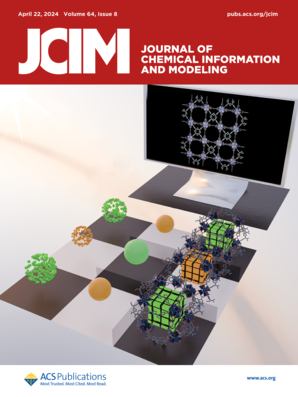一种用于调节分子性质的高通量计算协议:在ESIPT发色团中的应用。
IF 5.3
2区 化学
Q1 CHEMISTRY, MEDICINAL
引用次数: 0
摘要
在过去的十年中,计算能力和理论方法的改进使系统的高通量计算研究成为可能。在这项工作中,我们提出了一种简单的自动化计算协议的发展,用于研究已知分子的分子取代,这将最大限度地减少人为错误和努力,同时利用现有的计算来优化计算成本。我们演示了在三个已知发色团进行分子内质子转移的测试案例中使用我们的协议:(1)对12个分子衍生物进行重点研究,其中协议在标准笔记本电脑上本地运行;(2)对169个衍生物进行更大的研究,允许调查影响基态和激发态反应性的趋势;(3)对如何使用我们的协议来调查大型(超过700)衍生分子集并选择满足特定给定应用所需标准的候选分子进行现实研究。我们的协议,可在线获得,旨在方便用户和轻量级,能够高效和直接筛选数百个分子衍生物。本文章由计算机程序翻译,如有差异,请以英文原文为准。
A High-Throughput Computational Protocol for Tuning Molecular Properties: Application to ESIPT Chromophores.
Over the past decade, improvements in computing power and theoretical approaches have enabled high-throughput computational investigations of systems. In this work, we present the development of a simple automated computational protocol for the study of molecular substitutions to known molecules, which minimizes human error and effort while capitalizing on existing calculations to optimize computational cost. We demonstrate the use of our protocol on three test-cases of known chromophores undergoing intramolecular proton transfer: (1) a focused study of 12 molecular derivatives, where the protocol is run locally on a standard laptop, (2) a larger study of 169 derivatives, which allows for investigation of trends influencing ground- and excited-state reactivity, and (3) a realistic study of how our protocol could be used to investigate a large (over 700) set of derivative molecules and select candidates fulfilling required criteria for a particular given application. Our protocol, available online, is designed to be user-friendly and lightweight and enables efficient and straightforward screening of hundreds of molecular derivatives.
求助全文
通过发布文献求助,成功后即可免费获取论文全文。
去求助
来源期刊
CiteScore
9.80
自引率
10.70%
发文量
529
审稿时长
1.4 months
期刊介绍:
The Journal of Chemical Information and Modeling publishes papers reporting new methodology and/or important applications in the fields of chemical informatics and molecular modeling. Specific topics include the representation and computer-based searching of chemical databases, molecular modeling, computer-aided molecular design of new materials, catalysts, or ligands, development of new computational methods or efficient algorithms for chemical software, and biopharmaceutical chemistry including analyses of biological activity and other issues related to drug discovery.
Astute chemists, computer scientists, and information specialists look to this monthly’s insightful research studies, programming innovations, and software reviews to keep current with advances in this integral, multidisciplinary field.
As a subscriber you’ll stay abreast of database search systems, use of graph theory in chemical problems, substructure search systems, pattern recognition and clustering, analysis of chemical and physical data, molecular modeling, graphics and natural language interfaces, bibliometric and citation analysis, and synthesis design and reactions databases.

 求助内容:
求助内容: 应助结果提醒方式:
应助结果提醒方式:


